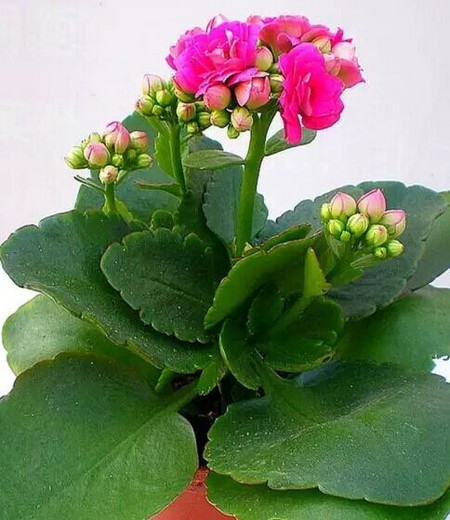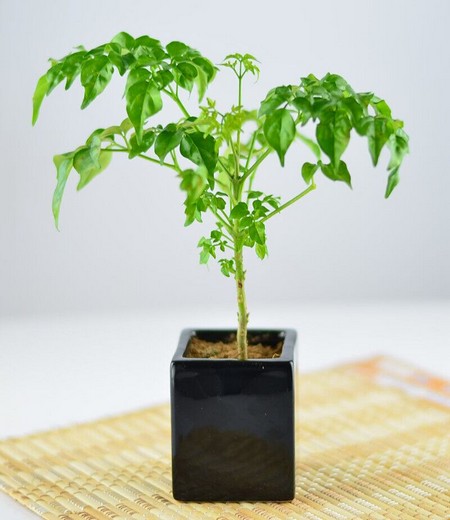How to raise the potted Happiness Tree: the correct cultivation method of the Happiness Tree
Happiness tree is a medium deciduous tree in its natural state. Recently, some growers have carefully cultivated it to make it have a beautiful shape and become a high-grade potted flower suitable for home and office display. The roots, leaves, and fruits of the happiness tree can be used for medicinal purposes, which can cool blood, reduce swelling and reduce fever, and can also treat injuries caused by falls and poisonous snakebites. Therefore, the "happiness tree" is increasingly welcomed and recognized by the majority of people who are in favor of it.
Happiness tree is a good foliage type of large potted plants, in the north, generally in indoor breeding, such as large banquet halls, office space to put more. If we want to raise the happiness tree indoors, we must also know its growing environment, habits, place of origin and so on. Only by knowing this information can we raise it well indoors in the north.
Illumination: the happiness tree is a sunny plant that can survive under the full sun or in a semi-shaded environment, but neither can be extreme. If there is too much sunlight in some areas in summer, do not expose yourself to the sun. For example, you can build a small shed above the happiness tree outdoors, with the top sunshade on three sides, so that the sun can not expose it in the hottest days. Measure light when the sun rises or sets in the west to prevent the happiness tree from drying up due to exposure. If you leave it in the shade for a long time, the happiness tree will turn yellow and fall off because it has not seen the sun for a long time.
Temperature: happiness tree is produced in tropical and subtropical regions. It naturally likes high-temperature plants. The most suitable temperature is about 20 degrees, but the maximum should not exceed 28 degrees and the lowest should not be less than 8 degrees. If the temperature is higher than 28 degrees in summer, please put the happiness tree indoors or in the shed, preferably ventilating and spraying water to the leaves to help cool it down. In autumn and winter, if the temperature drops below 10 degrees, try to put the happiness tree in an air-conditioned or heated environment to prevent discomfort and even frostbite caused by too low temperature. No matter what season, try to control the happiness tree to survive at the right temperature.
Humidity: happiness trees like humid soil and cultivation environment. The air humidity should generally be kept between 70% and 80%, and the maximum should not exceed 85%. If placed in the family, plants can often be sprayed with slightly warmer water to maintain their elegant appearance and increase the humidity of the environment.
Moisture: the happiness tree likes a relatively humid environment, but the roots can not be blistered, the soil can be kept moist, moisture can not be lacking but can not be overwatered, otherwise the roots will rot. In the high temperature season in summer, plants consume a lot of water, coupled with high temperature, it is necessary to often check the soil wettability and replenish water in time, spray some water on the leaves every 2-3 days, increase humidity can also assist in cooling.
Fertilizer: the fertilizer needed by the happiness tree is N: P:K:Ca:Mg=l00:9:87:53:12. The EC value of fertilizer can be 1.61.7 mS/cm, which can be increased to 1.9mS/cm during the rapid growth period of plants.
Growth regulator: the height of the high-quality happiness tree popular in the market is generally about 70cm, the crown width is about 60cm, the Internode is about 1-3cm, the diameter of the leaf is about 5-7cm, and the petiole is shorter, the leaf is dense, the color is bright, and has a very high ornamental value. In order to achieve this standard, growth regulators must be used. Paclobutrazol is often used. The concentration of paclobutrazol is used in 5-50ppm, once every week or so. The concentration and frequency of use can be adjusted according to the weather and plant growth conditions, and finally achieve a reasonable and beautiful plant shape.
Pest control: all plants need to be protected against pests, but there are different types of pests to be prevented. The main insect pests of Happiness Tree: leaf spot, mites, aphids, shell insects and so on. Leaf spot disease, as the name implies, means long spots on leaves. In this case, the leaves should be removed in time. It is best to take them outdoors and burn them to prevent other leaves from getting infected. Shell insects generally grow on the trunk of a book and sweep down in time after they are found and killed.
The main cause of the above two diseases is the breeding in the environment of high temperature and no ventilation, so be sure to ventilation, these two kinds of pests are easy to observe, and can be remedied in time when the disease is found in the early stage. And mites, invisible to the naked eye, aphids are very small, do not pay attention to observation is not easy to find, mainly reflected in the growth of new leaves wrinkled, and curly, uneven leaves. It is necessary to administer medicine to get rid of insects in time.
Time: 2019-06-01 Click:
- Prev

How to raise longevity flowers in potted plants
Longevity flowers are liked by many families because of their flower names, especially potted varieties liked by the elderly. according to the market, longevity flowers of red varieties are the best sellers. The longevity flower, the dwarf cabbage, is a perennial succulent herb with opposite leaves, tender and succulent, easily broken; terminal Cymes
- Next

Culture method of Bonsai of Happiness Tree
Happiness tree is deeply loved by the family and office environment because of its implied name, especially its luxuriant branches and leaves, small and green leaves, very ornamental, it can also absorb harmful substances in the air, with the impact of radiation protection, but also a healthy work and home environment, so how to raise the happiness tree
Related
- Fuxing push coffee new agricultural production and marketing class: lack of small-scale processing plants
- Jujube rice field leisure farm deep ploughing Yilan for five years to create a space for organic food and play
- Nongyu Farm-A trial of organic papaya for brave women with advanced technology
- Four points for attention in the prevention and control of diseases and insect pests of edible fungi
- How to add nutrient solution to Edible Fungi
- Is there any good way to control edible fungus mites?
- Open Inoculation Technology of Edible Fungi
- Is there any clever way to use fertilizer for edible fungus in winter?
- What agents are used to kill the pathogens of edible fungi in the mushroom shed?
- Rapid drying of Edible Fungi

